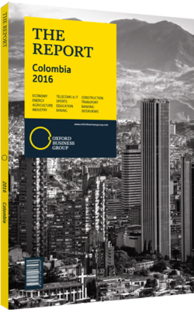Rugby offers an alternative in Colombian conflict areas
Since its beginnings back in the 19th century, rugby has maintained a privileged position among sports practised in countries with British colonial pasts. However, it has a short history in non-English speaking regions such as Latin America. Rugby began in Colombia during the 1970s, when a small number of expatriate workers started organising friendly matches. It was only in 1993, that French-Colombian amateur Hans Rausch promoted the creation of the Colombian Rugby Federation (Fecorugby). Since then, this sport has grown considerably, with the country now boasting over 10,000 players at a national level.
According to Andrés Botero, president of Coldeportes, rugby is “among the fastest growing sports in the country”. While rugby remains a game played by a minority of Colombians, it has expanded to the extent of having a strong social influence in certain areas of the country, both urban and rural. This is the case of Medellín, Colombia´s second largest city, and where Fecorugby chose to place its headquarters two decades ago. Since then, rugby has kept steady growth in terms of the number of players, level of competitiveness and social impact. In fact, this sport has been used as an escape route by hundreds of young people whose fate seemed linked to street gangs and various guerrilla movements.
A Different Future
In order to change the fortunes of young people in deprived areas, the mayor of Medellín decided to build, through the city´s Institute of Sports and Recreation (Instituto de Deportes y Recreación, INDER), an impressive rugby field in the heart of the Castilla district. The latter is one of 20 marginal comunas in Medellín, with a large gang presence, that surround the city centre. The construction of the field represented a significant investment of $5m, and was instrumental in attracting young people to the sport of rugby from this neighbourhood and other nearby areas that suffer from high violence rates, according to INDER’s director, David Mora.
Since then, Castilla established its own home team, Los Gatos (The Cats). The team attracts and trains young men and women who choose to compete in sports instead of using drugs and engaging in violence. Los Gatos are led by sportsmen that were in touch with gangs before playing rugby, such as José Manuel Diosa, one of the country´s most promising players. “This is the best way to escape from the hazards of our neighbourhoods,” Diosa told OBG. He said that rugby has taught him things that go far beyond the sport, including teamwork and solidarity.
Diosa is one of the numerous players from Los Gatos that are now part of the national team. Despite only a brief history of involvement in international competitions, Colombia has climbed steadily in the International Rugby Board’s rankings, and now holds the 44th position out of the 102 ranked countries. The team´s recent success including winning the South American “B” championship in November 2015 for the second year in a row, with a team composed mostly of players from urban areas in conflict.
“We continue to grow as a team and as athletes. Our intention is to get closer to the world leaders in this sport,” Santiago Mejia, captain of the national team, told OBG. The success of the men’s squad is complemented by the women’s team qualification for the 2016 Summer Olympics.
Tool Against Conflict
The phenomenon of rugby rapidly transcended Medellín and rose to the national level. Following the local success of INDER, the Ministry of Foreign Affairs began to use the sport as an alternative to violence for youth in conflict areas. In this context, Maria Ángela Holguín, minister of foreign affairs, signed an agreement with the sports ambassador at the French Ministry of Foreign Affairs and International Development, Jean Levy, in March 2015. The agreement intends to develop rugby in marginal areas as a means to prevent the forced recruiting of children by illegal armed groups.
You have reached the limit of premium articles you can view for free.
Choose from the options below to purchase print or digital editions of our Reports. You can also purchase a website subscription giving you unlimited access to all of our Reports online for 12 months.
If you have already purchased this Report or have a website subscription, please login to continue.

